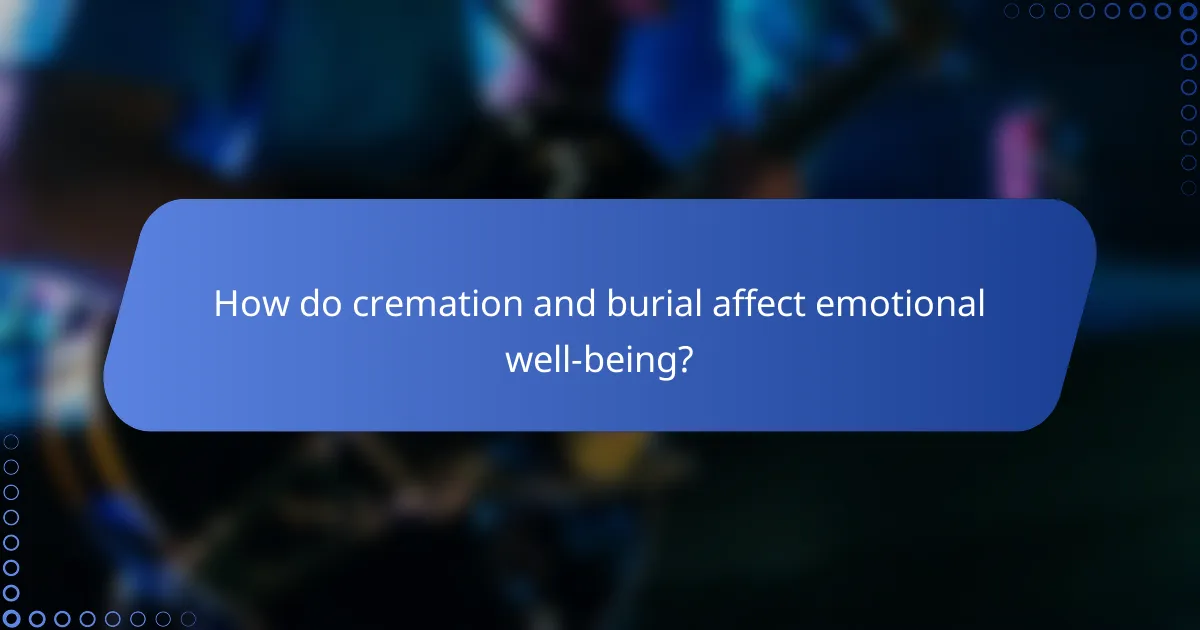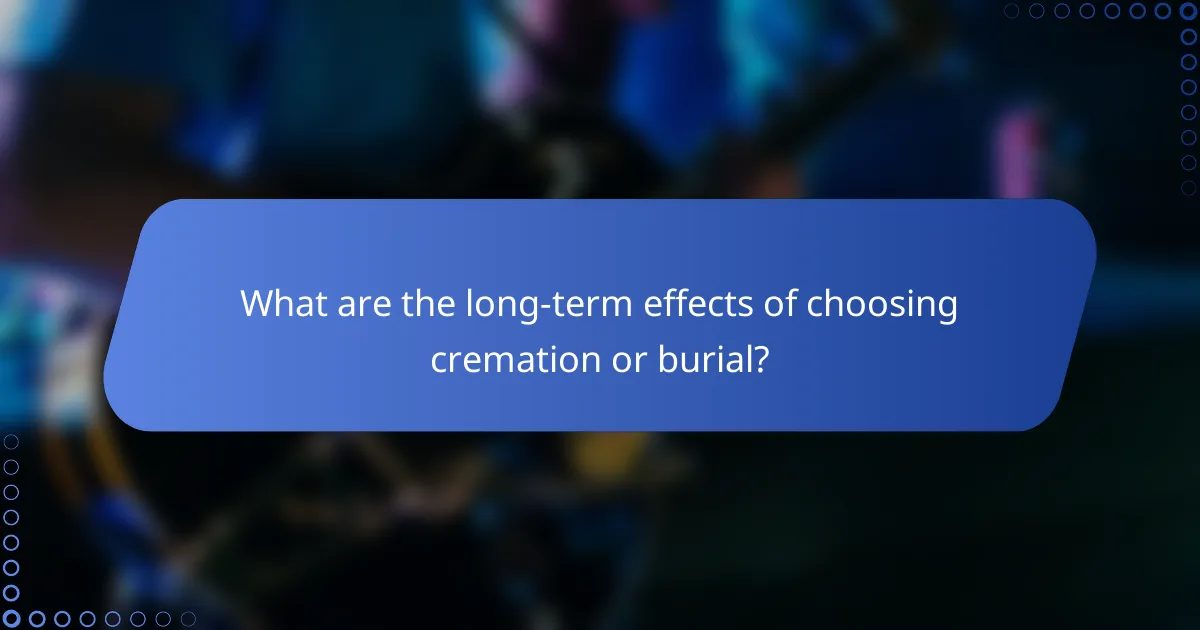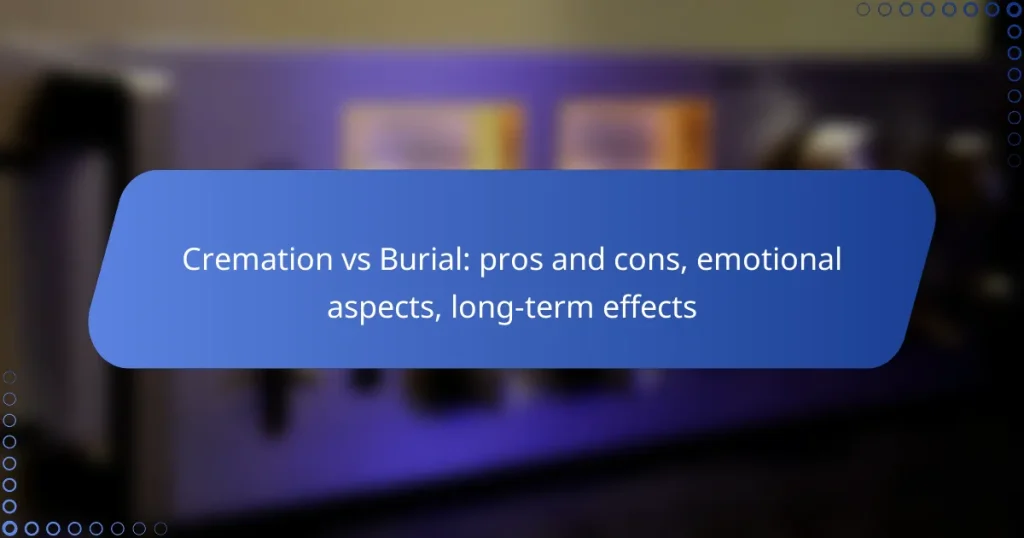The decision between cremation and burial is a deeply personal one, influenced by various factors including cost, environmental impact, and cultural significance. Each option presents unique advantages and disadvantages that can affect not only the logistics of the final arrangements but also the emotional well-being of the bereaved. By exploring the pros and cons of both methods, families can make informed choices that resonate with their values and traditions.

What are the pros and cons of cremation in Canada?
Cremation in Canada offers several advantages and disadvantages that families should consider. While it tends to be more affordable and environmentally friendly, it also raises emotional and cultural questions for many individuals.
Cost-effective option
Cremation is generally more affordable than traditional burial. The average cost of cremation in Canada can range from CAD 1,000 to CAD 3,000, while burial expenses, including caskets and plots, can exceed CAD 5,000. This financial difference can significantly impact families, especially during a time of loss.
Choosing cremation can help families allocate resources towards memorial services or other meaningful tributes, rather than on burial costs. It’s essential to compare local cremation service providers to find the best value.
Environmental considerations
Cremation is often viewed as a more environmentally friendly option compared to burial. Traditional burials require land, which can lead to habitat loss, while cremation uses less physical space. Additionally, modern cremation practices have improved to reduce emissions and environmental impact.
Families concerned about their carbon footprint may prefer cremation, especially if they choose biodegradable urns or scatter ashes in meaningful locations instead of using traditional burial plots.
Flexibility in memorial services
Cremation provides families with greater flexibility in planning memorial services. Unlike burials, which typically occur shortly after death, cremation allows for a delayed memorial service, giving loved ones time to gather and celebrate the deceased’s life.
This flexibility can lead to more personalized and meaningful services, whether they are held in a religious setting, at home, or in a unique location that reflects the deceased’s personality.
Potential emotional relief
For some families, cremation can offer emotional relief by simplifying the process of saying goodbye. The absence of a traditional burial can reduce stress associated with planning and logistics, allowing families to focus on honoring their loved one.
However, it’s important to acknowledge that some individuals may feel a sense of loss or discomfort with cremation. Open discussions about preferences and feelings can help families navigate these emotional aspects.
Less physical space required
Cremation requires significantly less physical space than traditional burial. This is particularly relevant in urban areas where land is limited and expensive. Families can choose to keep ashes in an urn at home, scatter them in a meaningful place, or use them in memorial jewelry.
This space-saving aspect can be a practical consideration for families, especially those who may not have access to a burial plot or prefer not to maintain a gravesite over time.

What are the pros and cons of burial in Canada?
Burial in Canada offers several advantages and disadvantages that families should consider. While it is a traditional practice that provides a permanent resting place, it also involves ongoing maintenance and can be more costly compared to other options like cremation.
Traditional practice
Burial is a long-standing tradition in Canada, often rooted in cultural and religious beliefs. Many families prefer this method as it aligns with their values and provides a sense of continuity with past generations.
Choosing burial can also facilitate memorial services that allow family and friends to gather, share memories, and celebrate the deceased’s life in a meaningful way.
Permanent memorialization
Burial allows for a permanent memorialization of the deceased, often through gravestones or markers that can be personalized. This provides a physical location for loved ones to visit, reflect, and pay their respects over time.
Families can choose from various styles and materials for headstones, creating a lasting tribute that can be maintained for years to come.
Emotional closure for families
For many, burial offers emotional closure, allowing families to have a designated place to grieve and remember their loved ones. This can be particularly important for those who find comfort in visiting the grave site.
The act of burial itself can also serve as a ritual that helps families process their loss, providing a structured way to say goodbye.
Land use and maintenance
Burial requires land, which can be a significant consideration, especially in urban areas where space is limited. Cemeteries must be maintained, and this can involve ongoing costs for families or the community.
Additionally, some families may face challenges in accessing the burial site due to distance or the upkeep of the cemetery grounds.
Potential higher costs
Burial can be more expensive than cremation, with costs that may include the purchase of a burial plot, casket, and headstone. Families should budget for these expenses, which can vary widely depending on location and services selected.
It’s advisable to compare prices and services from different funeral homes and cemeteries to ensure informed decisions that align with financial considerations.

How do cremation and burial affect emotional well-being?
Cremation and burial can significantly influence emotional well-being, as each option carries distinct psychological implications for the bereaved. Understanding these differences helps individuals and families navigate their grief and make informed choices that align with their values and traditions.
Grieving process differences
The grieving process can vary between cremation and burial. With burial, the act of visiting a gravesite can provide a tangible place for mourning, allowing family and friends to gather and share memories. In contrast, cremation may lead to a more abstract grieving experience, as there is no physical location to visit, which can affect how individuals process their loss.
Additionally, some people find comfort in holding memorial services post-cremation, which can foster community support. However, the absence of a traditional burial may leave others feeling a lack of closure.
Family dynamics and traditions
Family dynamics often play a crucial role in deciding between cremation and burial. Cultural and religious beliefs can heavily influence these choices, with some traditions favoring one method over the other. For instance, many cultures have specific burial rites that are integral to their mourning practices, while others may embrace cremation as a more modern or environmentally friendly option.
Disagreements among family members regarding the preferred method can lead to tension. Open discussions about values and expectations can help families navigate these differences and reach a consensus that honors the deceased.
Long-term emotional impacts
The long-term emotional impacts of cremation and burial can differ significantly. Individuals who choose burial may find solace in maintaining a physical connection to their loved one through regular visits to the gravesite. This can provide ongoing comfort and a sense of continuity in their relationship with the deceased.
Conversely, those who opt for cremation might experience a more varied emotional journey, as they may need to create their own rituals or memorials to honor their loved one. Establishing personal traditions, such as scattering ashes in meaningful locations, can help foster healing and remembrance over time.

What are the long-term effects of choosing cremation or burial?
The long-term effects of choosing cremation or burial can significantly impact family dynamics, environmental considerations, and personal legacies. Each option carries distinct implications that should be carefully weighed based on individual values and circumstances.
Impact on family legacy
Cremation and burial can both influence how a family remembers and honors their loved ones. Burial often provides a physical location for family gatherings and memorialization, allowing descendants to visit a grave site. In contrast, cremation may lead to more diverse memorial practices, such as scattering ashes or keeping them in an urn, which can affect how future generations connect with their family history.
Additionally, burial plots can become family heirlooms, passed down through generations, while cremation may offer flexibility in memorialization that can cater to changing family dynamics and preferences. Families should consider how each choice aligns with their traditions and the legacy they wish to create.
Environmental footprint
The environmental impact of cremation versus burial varies significantly. Traditional burial requires land use, which can contribute to habitat loss and resource consumption, particularly in densely populated areas. In contrast, cremation generally requires energy for the process but does not occupy land long-term.
Some families may opt for green burials, which use biodegradable materials and aim to minimize ecological disruption. This choice can reduce the environmental footprint associated with traditional burial methods. When considering these options, families should evaluate local practices and regulations, as well as their personal values regarding sustainability and environmental stewardship.


